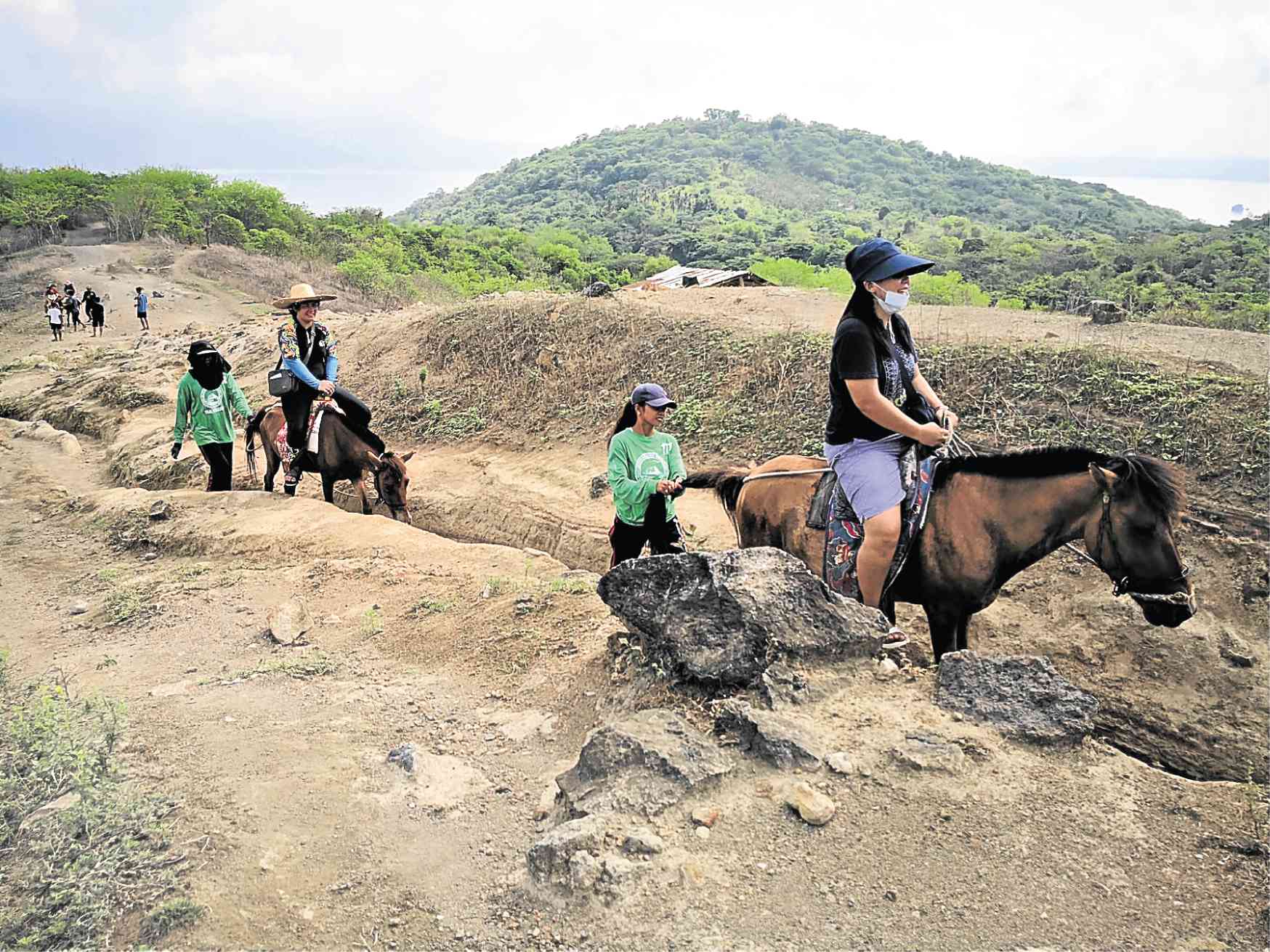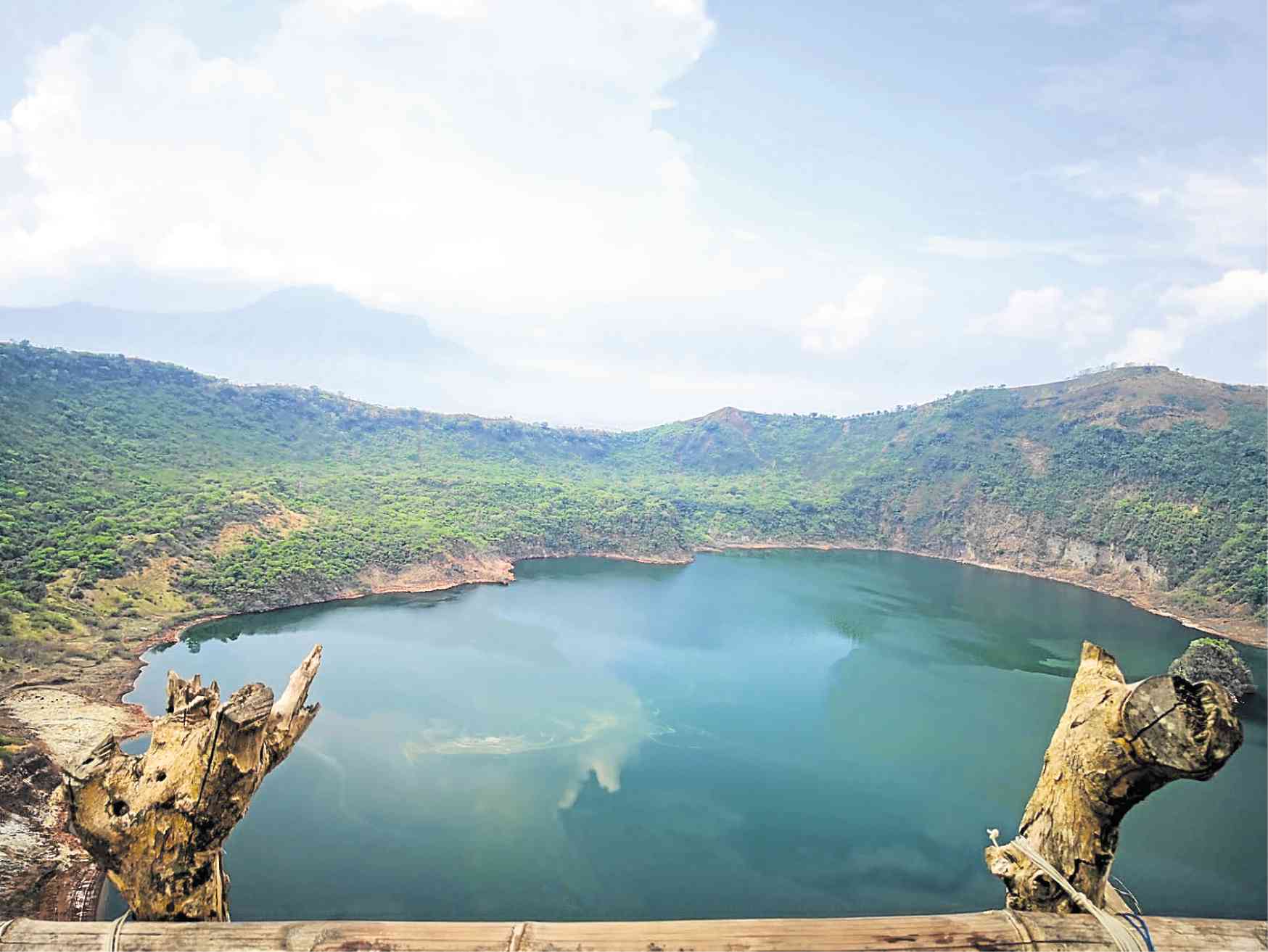Up close: Amazing Taal Volcano, lake

CRATER ADVENTURE Tourists experience a different high as they move around Taal volcano on horseback and view the crater lake of this active volcano up close. After the tour, visitors can sample the best of local dishes, like grilled or “sinigang na maliputo” and crispy “tawilis,” pairedwith “kapeng barako” (Batangas coffee), in Talisay’s town center.Maliputo and tawilis are endemic fish
species in Taal Lake. —PHOTOS BY CLIFFORD NUÑEZ
TALISAY, Batangas, Philippines — In the heart of Batangas province lies nature’s treasure, beautiful yet ominous. Taal Volcano, one of the world’s smallest but deadliest, is a tourism centerpiece shrouded in mysteries and complexities—being “a lake within a lake.”
To some, setting foot on an active volcano is more than sightseeing but something regarded as bringing forth fortune and prosperity.
“Many Chinese and Korean tourists seem to believe that,” said Len Barba, tourism chief of Talisay.
Lake loop
True or not, seeing an active volcano up close is rewarding enough.
Talisay’s tourists number 300 to 400 a day, many of them foreigners, according to Barba. Among the recent visitors were Mexican travelers Valeria Dumas, 25, and Pablo Errgeu, 30, who chose Taal volcano as their second stop in the Philippines.
“I think this place is really amazing,” Dumas said while looking over the main crater lake, the most prominent feature of the landscape.
Talisay, a third-class agricultural municipality, serves as gateway to the volcano island (23 square kilometers). Other towns around the lake are Santo Tomas, Laurel, Agoncillo, Santa Teresita, San Nicolas, Alitagtag, Cuenca, Mataas na Kahoy, Balete and Malvar, as well as Tanauan City.
“While each town has its own [tourism program], they’re all still anchored on Taal volcano,” Barba said.
There are three points from which to cross the Taal Lake by boat (30 to 45 minutes) and trails that lead to the crater lake. These are Talisay, Barangay Calawit in Balete and Barangay Alas-as in San Nicolas.
The volcano island, with 6,000 to 7,000 residents, is divided into these three municipalities. There is no electricity and water comes from deep wells.
Most households own a boat and a horse, which they rent out to tourists (P500 each) for a ride of 30 to 45 minutes to the viewing decks.

Perfect view
Talisay is probably the most accessible from Manila (a 20-minute steep descent via Ligaya Drive from Tagaytay City in Cavite province) and with the most number of hotels and resorts. But to the more adventurous ones, there is the Pusod Taal Lake Conservation Center in Sitio Lipute, Mataas na Kahoy.
“They say the perfect view [of the crater lake] is from the Calawit side. Maybe it’s really just up to you. If you’re into hiking, take the San Nicolas trail. Via Talisay, the view’s OK, but an issue is the foot traffic [on the trail],” said Jord Earving Gadingan, Pusod project leader.
Pusod is a nongovernment environment education group that offers tours and activities like kayaking, paddle-boating and camping. For P350, the center offers modest accommodation in lofts or cabanas usually reserved for researchers and geologists who wish to study Taal.
Pusod also manages a community kitchen that serves food (P150-P200 per meal) of locally grown vegetables and fish like the “tawilis” (freshwater sardine) and “tulingan” (mackerel tuna).
“We offer knowledge-based tours. Before the tour, we give briefing on the eruption history, biology and archaeology of Taal,” Gadingan said.

Lava walk
The 1.7-kilometer trek up the viewing deck is best done in the morning as there isn’t much forest cover. On top, one can see hundreds of fish cages strewn across the lake, and birds like “kilyawan” (black-naped oriole) and “kannaway” (white-winged tern) flying above.
Come across rock formations and even steam vents on the trail, or try the “Red Lava” or the “Lava Walk” (Talisay side), a short walk on the ridge for a better view of the crater lake.
“Before, we used to allow tourists to go down the crater lake but we restricted them due to safety concerns,” Barba said.
Geologists have warned against getting too close to the crater due to possible hazardous gas emissions, Gadingan said.
Selling experience
The entire volcano island trip can be completed in half a day, leaving you plenty of time to explore the lakeshore towns. If you happen to be on the Balete side, the popular Marian Orchard church is worth a quick afternoon drive.
In Talisay, a village called Buco is known for its local “bibingka” (rice cake), while a roadside restaurant, Milan’s, is an affordable place to try local cuisine with tawilis and “maliputo” (trevally).
Talisay is also known for its local plant breeding industry. In 2018, the town has produced 3,625,975 seedlings of cacao, lanzones, coffee, narra and other species.
“Aside from the sites, what we want to sell is the experience,” Barba said.














